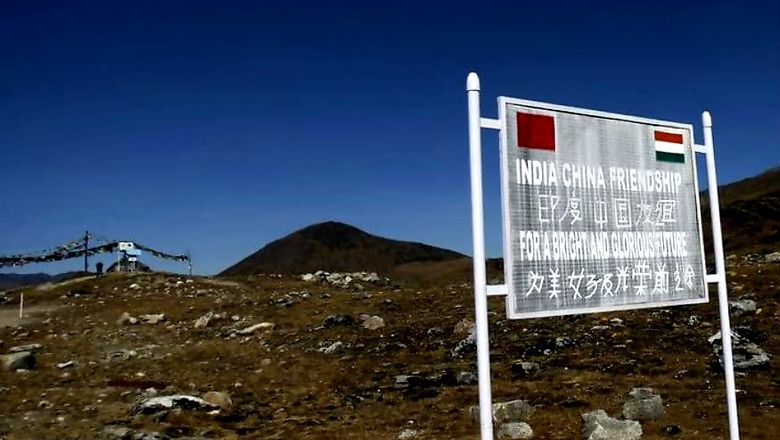
views
The Chinese state media has confirmed what the Indian forces have been trying to downplay since early May. The Line of Actual Control (LAC) is tense and a standoff is underway between the Indian and Chinese Army in Galwan Valley in eastern Ladakh.
The official mouthpiece of the Communist regime in China, Global Times, in an article published on Monday said the People's Liberation Army (PLA) has "bolstered border control measures in response to India building defence facilities in Chinese territory".
"Since early May, India has been crossing the boundary line in the Galwan Valley region and entering Chinese territory. The Indian side built defence fortifications and obstacles to disrupt Chinese border defence troops' normal patrol activities,” the report said.
This is an indication of a heavy troop build-up on both sides after the incident of May 5 when about 250 Indian and Chinese soldiers clashed with iron rods and sticks, even resorting to stone pelting.
Sources say more than 70 Indian soldiers were injured in the clash. A day later, two Chinese helicopters were spotted near the LAC, following which Sukhoi-30 jets conducted sorties from the Leh airbase. Days later, there was a similar face-off near Naku La Pass in North Sikkim.
Galwan has been an old flashpoint since 1962. There have been many such incidents of major and minor altercations and standoffs over the last 10 years in the Daulat Beg Oldie Region.
A second article in the Global Times said the present Chinese military action in the Galwan Valley is the strongest since the Doklam standoff of 2017.
Quoting sources, it said since early May, Indian troops have been crossing into Chinese territory and "purposefully instigating conflict to change the current border control situation". The Indian Army has denied this claim.
The article went on to say that "if India exaggerates the friction, the Indian military will have to pay a heavy price for it".
When asked for a response, an officer in the Indian Army said, "We cannot respond to everything that the Chinese media claims."
Army Chief General MM Naravane said temporary and short duration standoffs occur due to the differing perception of the alignment of boundaries which is not resolved, adding all such incidents are managed by established mechanisms locally.
He had earlier said Indian troops were maintaining their "posture" along the border with China while infrastructure development in the areas was also on track.
"There were two incidents at Eastern Ladakh and North Sikkim where aggressive behaviour by both sides resulted in minor injuries to troops post which both sides disengaged after dialogue and interaction at the local level," he had said.
Last week, India said it remained committed to maintaining peace and tranquillity along the border with China noting that such incidents could have been avoided if there was a common perception about the frontier.
External Affairs Ministry Spokesperson Anurag Srivastava said on May 14 that India and China attach utmost importance to ensuring peace and tranquillity in all areas of Sino-Indian border regions and referred to affirmation about it by Prime Minister Narendra Modi and Chinese President Xi Jinping in their two informal summits.
Though the Indian Army says an official disengagement has happened in Galwan Valley, reports coming in suggest reinforcement of troops on both sides.
The Global Times also has a theory on why India is provoking China. It quotes a research fellow from the Shanghai Academy of Social Sciences who says "the Indian government is under pressure and is trying to deflect attention from its poor handling of the COVID-19 pandemic".
The troops of India and China were engaged in a 73-day stand-off in the Doklam tri-junction in 2017. The India-China border dispute covers the 3,488-km-long LAC, the de-facto border between the two countries. China claims Arunachal Pradesh as part of southern Tibet while India contests it.
Both sides have been asserting that pending the final resolution of the boundary issue, it is necessary to maintain peace and tranquillity in the border areas.
Modi and Xi held their first informal summit in April 2018 in the Chinese city of Wuhan, months after the Doklam standoff. During the summit, the two leaders decided to issue "strategic guidance" to their militaries to strengthen communications so that they can build trust and understanding.
Modi and Xi held their second informal summit in Mamallapuram near Chennai in October last year with a focus on further broadening bilateral ties.
(With inputs from PTI)




















Comments
0 comment